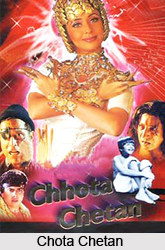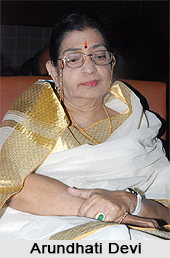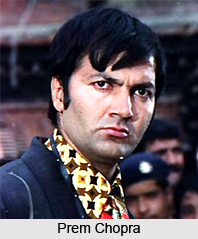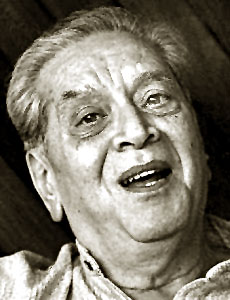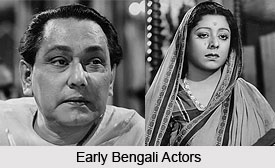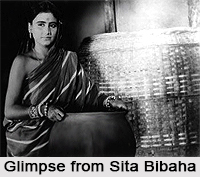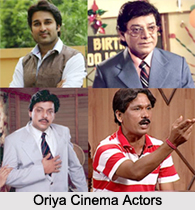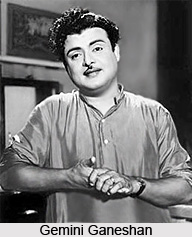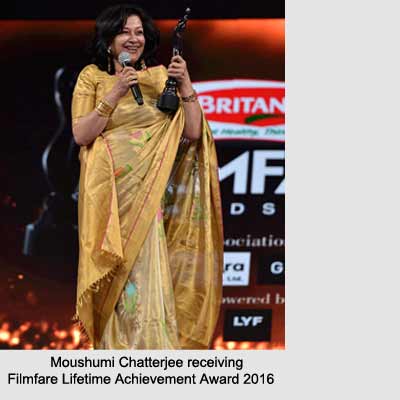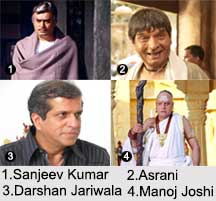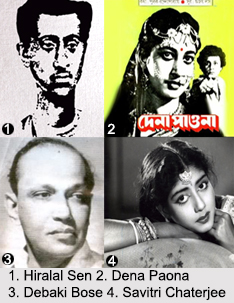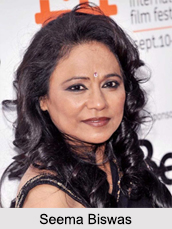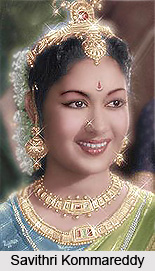About Guru Dutt
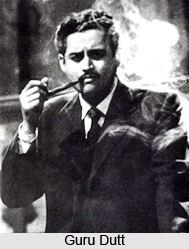 In the cinematographic history of India, Guru Dutt (1925-64), author, director and producer, has left the image of a somber and self-destructive romantic hero haunted by failure and death. Guru Dutt marked the Indian film industry by a completely different personal approach that is being rediscovered and admired even today. He is remembered in the history of Indian cinema as the brooding passionate romantic who tried to reflect the changing social situation in India in the fifties. Within his short life, he created some of India`s most socially conscious movies like Pyaasa (Thirsty, 1957), Kaagaz ke Phool (Paper Flowers, 1960) and Baazi (1951). Guru Dutt introduced Waheeda Rehman in CID (1956) and propelled her to stardom through his films.
In the cinematographic history of India, Guru Dutt (1925-64), author, director and producer, has left the image of a somber and self-destructive romantic hero haunted by failure and death. Guru Dutt marked the Indian film industry by a completely different personal approach that is being rediscovered and admired even today. He is remembered in the history of Indian cinema as the brooding passionate romantic who tried to reflect the changing social situation in India in the fifties. Within his short life, he created some of India`s most socially conscious movies like Pyaasa (Thirsty, 1957), Kaagaz ke Phool (Paper Flowers, 1960) and Baazi (1951). Guru Dutt introduced Waheeda Rehman in CID (1956) and propelled her to stardom through his films.
The childhood of Guru Dutt was troubled due to financial constraints and internal problems, however he derived his inspiration towards performing arts from his maternal uncle and took formal training of dancing from the maestro Uday Shankar. The early career of Guru Dutt was spent in various occupations, but finally he found his way through the world of entertainment as a true performer.
Guru Dutt as a director created a benchmark in Indian films. Apart from the films of the other directors in which he acted he himself made 8 films. Some of them were commercial failures because they went so much against the trend of the cinema of his age. However, three have remained as the cult films of Guru Dutt, having influenced Indian commercial cinema from within. In 1951 he was invited by Dev Anand to make Baazi whose script was co signed by Guru Dutta and Balraj Sahni. It is a fairly lighthearted American style film. Guru Dutt as a choreographer also created magic in his numbers and his Guru - Uday Shankar, largely inspired his movements.
In the first film produced and directed by him, Aar Paar (1954), in which he also played the lead role, with Johnny Walker, Guru Dutt enacts an offhand, optimistic and typical Bombay street hero. The hero is shown in a neo-realistic and sensitive light. Then followed another comedy Mr. and Mrs. 55. Influenced from the spirited American style, this comedy pondered on the very Indian theme that love is induced by marriage, even an arranged one. Commercial success greeted this lively story of a young heiress whom the will of her father requires to be married within a month in order to be entitled to the property.
Guru Dutt`s films are also said to manifest by certain nostalgia, most evident in Sahib, Bibi aur Gulam, a film that explores the decline of feudal landed family. An aristocratic character, a flair for style, characterizes this film. Guru Dutt as a producer in all of his films was to show mastery over cinematic elements, from lighting and camera-work to film composition; and every film bears the unmistakable imprint of his work. Though not known widely outside India, the characters played by Guru Dutt as an actor is often compared to that of any director working at that time around the world. His brilliant career came to a premature end with his suicide.
Childhood of Guru Dutt
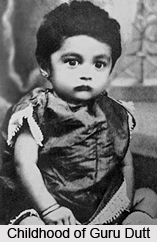 Guru Dutt or Vasanth Kumar Shivashankar Padukone was born on July 9, 1925 and was a Hindi film director, producer, and actor. This legend has made the exemplary 1950-`60s classics such as Pyaasa (The Thirsty One), Kaagaz Ke Phool (Paper Flowers), Sahib Biwi Aur Ghulam (The Gentleman, the Wife and the Servant) and Chaudhvi Ka Chaand (The Fourteenth Day Moon).
Guru Dutt or Vasanth Kumar Shivashankar Padukone was born on July 9, 1925 and was a Hindi film director, producer, and actor. This legend has made the exemplary 1950-`60s classics such as Pyaasa (The Thirsty One), Kaagaz Ke Phool (Paper Flowers), Sahib Biwi Aur Ghulam (The Gentleman, the Wife and the Servant) and Chaudhvi Ka Chaand (The Fourteenth Day Moon).
Guru Dutt was born to Shivashankar Rao Padukone and Vasanthi Padukone and they belonged to the Chitrapur Saraswats origin. Their ancestral home was at Panambur, a village in South Kanara district of Karnataka. His father was initially a headmaster, and then changed his profession as a bank employee. His mother Vasanthi was at first a housewife, but later taught in a school, offered private tuition and also wrote short stories and took effort to translate Bengali novels into Kannada to earn some money. Guru Dutt`s mother was only 16 years of age when he was born. Guru Dutt had a tough childhood with financial difficulties. Due to this constant botheration of expenses, his parents also had a strained relationship and as a result Guru Dutt suffered. As a child he experienced several violent situations in his home itself. The hostility from his maternal uncle`s family, a terrifying encounter with his insane maternal adopted uncle, and the death of his seven-month old brother Shashidhar made him numb at the depths of the young heart.
Vasanth Kumar was the first name given to Guru Dutt at birth at the suggestion of his mother`s elder brother, but after a childhood accident, he was renamed Guru Dutt, since his relatives felt the later name to be a more auspicious. Guru Dutt had three younger brothers, Atmaram, Devidas and Vijay and a younger sister, Lalitha. The Indian film director, Kalpana Lajmi happens to be his sister`s daughter. Guru Dutt loved to spend his time with his mother`s cousin, Balakrishna B. Benegal (known to the family as Bakutmama) who was a painter of cinema posters. The Indian film director, Shyam Benegal, is the son of Sridhar B. Benegal, who was Balakrishna`s younger brother.
At 14 years of age Guru Dutt would use his fingers to create images on a wall lit up by the flickering light of their grandmother`s diya, while she performed the evening arathi. Even without formal training Guru Dutt could create inspired movements as he did when he persuaded his uncle, Benegal, to photograph him performing a snake dance, based on only a painting by the his uncle. The snake dance was later performed at a communal gathering of Saraswat Brahmins at Calcutta for which Guru Dutt was even given a cash prize of 5 Rupees. Guru Dutt was a good student, but never went to college, mainly because of financial troubles at home. Instead, he voluntarily joined the performing arts troupe of Uday Shankar, the older brother of the better-known Ravi Shankar.
The Uday Shankar India Culture Center at Almora was a renowned institution teaching dance, drama, and music. This center aimed at combining the best of the Gurukula system with a modern Arts University, and tried to train potential students, at home in many disciplines. Guru Dutt joined the center at age 16 in 1941 on a five-year scholarship of Rs. 75 annually that meant a lot of money then and studied at Almora until 1944, when the advancing World War II forced the closing of the center.
Guru Dutt`s father had his job posting as a headmaster at Panambur and later changed the domain to a bank employee at Bangalore. He started to work as an administrative clerk at the Burmah Shell Company and resided at Bhawanipore near Calcutta, where Guru Dutt completed his schooling. Hence, Guru Dutt was able to speak fluent Bengali, and carried a distinct mark of Bengali culture in his work. Later, when he moved to Mumbai in the 1940s, he left alone the Shivashankar Padukone part of his name, and became known simply as Guru Dutt. Because Dutt is a very common Bengali title, many people assumed him to be a Bengali.
Early Career of Guru Dutt
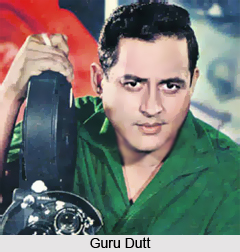 Guru Dutt left home for the first time to join an office as a telephone operator at a Lever Brothers factory in Kolkata. But very soon he left the job, and joined his parents in Mumbai in 1944. However, his uncle brought him a job with a three-year contract with the Prabhat Film Company in Pune in 1944. This once premier film-producing centre once experienced the departure of its best talent, V. Shantaram, who had by then launched his own Kala Mandir. It was in this film company, where Guru Dutt met two people who remained his eternal friends - actors Rehman and Dev Anand.
Guru Dutt left home for the first time to join an office as a telephone operator at a Lever Brothers factory in Kolkata. But very soon he left the job, and joined his parents in Mumbai in 1944. However, his uncle brought him a job with a three-year contract with the Prabhat Film Company in Pune in 1944. This once premier film-producing centre once experienced the departure of its best talent, V. Shantaram, who had by then launched his own Kala Mandir. It was in this film company, where Guru Dutt met two people who remained his eternal friends - actors Rehman and Dev Anand.
The dance maestro Uday Shankar trained Guru Dutt after finishing his basic education in Calcutta. Guru Dutt`s association with film industry began with his joining the Prabhat Studios. This multi talented personality began his career as a choreographer in Hum ek Hain (1946), which ironically was also the first film of his eminent actor director friend Dev Anand. Later, Guru Dutt joined Bombay Talkies.
Guru Dutt made his debut on the small screen by acting in a small role as Sri Krishna in Chand in 1944. In 1945, he acted and also assisted director Vishram Bedekar in film Lakhrani, and in 1946 he worked as an assistant director and did the choreography for dances in P. L. Santoshi`s film, Hum Ek Hain. This contract ended in 1947, but his mother contacted many people to get him a job as a freelance assistant with Baburao Pai, the CEO of the Prabhat Film Company and Studio. However, after this employment for almost ten months, Guru Dutt was unemployed and lived with his family at Matunga, Mumbai. During this time, Guru Dutt started to write randomly and developed a flair for writing in English. He wrote short stories for The Illustrated Weekly of India, which is a local weekly English magazine. During this time Guru Dutt wrote the script for the almost autobiographical film Pyaasa (Hindi: the thirsty one). Its original name given to this script was Kashmakash (Hindi: struggle) and later it was changed to Pyaasa.
Guru Dutt is undoubtedly one of the most multi faceted personalities the Indian Film Industry has ever witnessed. Later with the passage of time, Guru Dutt emerged as probably the best choreographer, actor, producer as well as a director of his era. Guru Dutt is however most acclaimed as a director.
Guru Dutt as a Director
Guru Dutt turned into a debutant director with the film Baazi and brought a huge hit on the silver screen in the year 1951. This film was made under the banner of Dev Anand`s `Navketan`. The film was a runaway hit and it depicted the beginning of Bombay Film Industries courtship with metropolitan crime films. This film was actually considered as a trendsetter. However, Aar Paar, another film by the maestro released in 1954 and made the position of this young director even firmer.
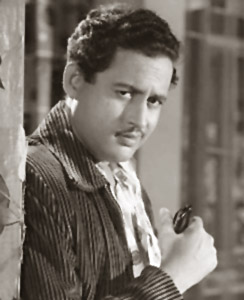 Guru Dutt further consolidated his position in the Bombay Film Industry with other hits like Mr and Mrs 55 and Pyaasa. Guru Dutt`s genius as a director finds expression in his incorporation of songs into the descriptive texture of the films. Songs in his films are not simply an added attraction; rather they are tools used as a vehicle to move the narrative further. This usage of songs is noticeable even in his debut film Baazi. The song ` Suno gajar kya gaaye` did set a new trend with the vamp warning the hero and as usual the song was the medium. This usage of a musical number was not seen before in Hindi films.
Guru Dutt further consolidated his position in the Bombay Film Industry with other hits like Mr and Mrs 55 and Pyaasa. Guru Dutt`s genius as a director finds expression in his incorporation of songs into the descriptive texture of the films. Songs in his films are not simply an added attraction; rather they are tools used as a vehicle to move the narrative further. This usage of songs is noticeable even in his debut film Baazi. The song ` Suno gajar kya gaaye` did set a new trend with the vamp warning the hero and as usual the song was the medium. This usage of a musical number was not seen before in Hindi films.
Baazi was an immediate success and Guru Dutt followed it with films like Jaal and Baaz. Although neither of the films did well at the box office, but they brought together the Guru Dutt team that performed so brilliantly in his subsequent films. He discovered, and trained actors like Johnny Walker (comedian), V.K. Murthy (cinematography), and Abrar Alvi (writing and directing), among others. Guru Dutt is also credited for introducing the gorgeous and talented actress Waheeda Rehman to the Hindi cinema. Guru Dutt both directed and starred in the film Baaz, since he did not find a suitable actor for the principal character.
Fortune was on Guru Dutt`s side in the year 1954, when Aar Paar released that was followed by the 1955 hit, Mr. and Mrs. 55, then C.I.D., Sailaab, and in 1957, Pyaasa - the story of a poet, discarded by an heartless world, who achieves accomplishment only after his evident death. Guru Dutt played the lead role in three of these five films.
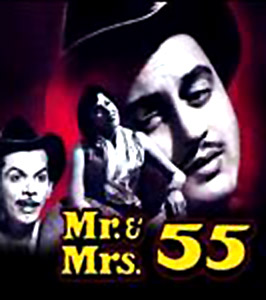 Guru Dutt`s film in 1959, Kaagaz Ke Phool was a strong disappointment. This film has projected a great deal of love, money, and energy, which was a self-absorbed tale of a famous director (often played by Guru Dutt) who falls in love with an actress (played by Waheeda Rehman). Kaagaz Ke Phool did not reach the success at the box office and Dutt was shocked. All subsequent films from his studio were not much appealing to box office. Sahib Bibi Aur Ghulam, was directed by his protégé and writer Abrar Alvi brought him the Filmfare Best Director`s award. The film`s star Waheeda Rehman denied any rumor that Guru Dutt himself did not direct the film. Guru Dutt also has his influence on his last box office smash hit film Chaudhvin Ka Chand.
Guru Dutt`s film in 1959, Kaagaz Ke Phool was a strong disappointment. This film has projected a great deal of love, money, and energy, which was a self-absorbed tale of a famous director (often played by Guru Dutt) who falls in love with an actress (played by Waheeda Rehman). Kaagaz Ke Phool did not reach the success at the box office and Dutt was shocked. All subsequent films from his studio were not much appealing to box office. Sahib Bibi Aur Ghulam, was directed by his protégé and writer Abrar Alvi brought him the Filmfare Best Director`s award. The film`s star Waheeda Rehman denied any rumor that Guru Dutt himself did not direct the film. Guru Dutt also has his influence on his last box office smash hit film Chaudhvin Ka Chand.
Guru Dutt`s legacy to direct Hindi cinema is distinctive and established by many leading Hindi directors of the day. Guru Dutt is probably the only Indian filmmaker who dared to make a personal statement with his cinema. His films stand testimony not only to his own brilliance but also to the ingenuity of his team, comprising stalwarts like cameraman V.K. Murthy, music director S.D. Burman, and writer Abrar Alvi, among other personalities.
As a director Guru Dutt was a perfectionist and never compromised on quality. He was a genius born to create a unique atmosphere through his sense of music, unique picturization of songs, delicate but smart dialogues, original themes, profundity of his characters, excellent use of lighting with light and shade, and splendid shots sometimes followed by close ups of actors thus emphasizing their expression which go beyond their narrative function and creates an notion of their own. Guru Dutt was also the one to introduce the use of long focal-length lenses, and 100 mm as 75 mm for close ups in Indian films. The decade of the 50`s and early 60`s witnessed him as a director as well as an actor and producer for several critically acclaimed films.
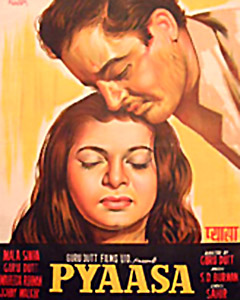 Guru Dutt`s directorial genius is overwhelmingly perceptible in his use of light and shade. The use of light and shade in all Guru Dutt`s films created a fitting atmosphere where romance can thrive at its best. His usage of light and shade to this paranormal effect can be best represented by the song-`Saakiya aaj mujhe neend nahin aayegi` from the film Sahib Bibi aur Ghulam. Guru Dutt is also attributed with using cinemascope for the first time in the arena of Indian cinema. He also utilized close up shot to probe deeper into the characters` consciousness.
Guru Dutt`s directorial genius is overwhelmingly perceptible in his use of light and shade. The use of light and shade in all Guru Dutt`s films created a fitting atmosphere where romance can thrive at its best. His usage of light and shade to this paranormal effect can be best represented by the song-`Saakiya aaj mujhe neend nahin aayegi` from the film Sahib Bibi aur Ghulam. Guru Dutt is also attributed with using cinemascope for the first time in the arena of Indian cinema. He also utilized close up shot to probe deeper into the characters` consciousness.
He was the one credited with applying tighter and close up shots of his actors. Pyaasa arguably one of his finest films in the Indian film industry that deals with the clash between the worldly and the unsophisticated nature of human beings. The talented poet in this film, acted by Guru Dutt himself, at the end, retires to secrecy leaving the materialistic world behind. Sahib Bibi aur Ghulam equally deals with a revolutionary idea and disturbing narrative. The film is a touching tale of loveless ness in the life of a high society people, especially in the lives of those women. Kaagaz ke Phool however manifested the end of the directorial genius of this gifted director. The miserable performance of this film made Guru Dutt quit the direction field. He also produced a film titled C.I.D in 1956, casting his friend Dev Anand as the lead hero.
Guru Dutt as an Actor
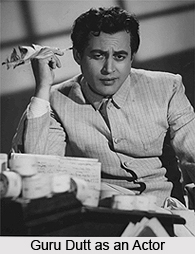 Guru Dutt, a versatile personality in Indian Cinema contributed to the film industry in the capacities of an actor, director, producer, choreographer and writer. He first tried out his ability in choreography for the film `Lakhrani` and eventually became famous across the arena of performing arts as an actor, director and producer is his real claim to fame. Film historians virtually remember Guru Dutt for his forefront movement in Indian cinema through his sensitive performances and mostly for the lyrical conduct of all the subjects that he selected to explore.
Guru Dutt, a versatile personality in Indian Cinema contributed to the film industry in the capacities of an actor, director, producer, choreographer and writer. He first tried out his ability in choreography for the film `Lakhrani` and eventually became famous across the arena of performing arts as an actor, director and producer is his real claim to fame. Film historians virtually remember Guru Dutt for his forefront movement in Indian cinema through his sensitive performances and mostly for the lyrical conduct of all the subjects that he selected to explore.
As an actor, Guru Dutt acted in about 16 films. In most of the films; Guru Dutt acted for the directors than himself. His acting career was his passion and also a product of frustration. He admired the mannerisms of Dev Anand who was his lead actor of his earlier films, however he made it a point to abandon his mannerisms and was unconvinced of pushing him too hard and thus in the process much complications entered their friendship. Guru Dutt decided to take up the task of grease painting himself. It is a record that for all his films, he thought of another actor from long before he took on the role himself. Being an actor by compulsion, he truly excelled in the craft. His performances can be rated as at its best and suited all the requirements of the scene and the film. He did well with the dark roles that immortalized him. The films like `Baaz`, `Aar Paar` and `Mrs and Mrs 55? would have done by some other actor but Guru Dutt playing the lead role with all his passion and love that was rare. Acting was not only the sphere where Guru Dutt`s genius lay; his role as a director to justify the acclamation heaped upon him.
Acting was indeed such a field where this genius director won critical acclamation. The role of Guru Dutt as the poet in Pyaasa, struggling to survive in the face of sheer materialism and selfishness is unforgettable. Again the depressed and dejected character of the director in Kaagaz ke Phool was a masterpiece by Guru Dutt. He portrayed the helplessness of a sensitive man in both these films with absolute perfection. Some other notable films where Guru Dutt acted with a marked excellence and which have left his indelible mark are:
| Twelve o`clock (1958) | Bahurani (1963) | Sanjh aur Savera (1964) |
| Sautela Bhai (1962) | Bharosa (1963) | Suhagan (1964) |
Guru Dutt as a Choreographer
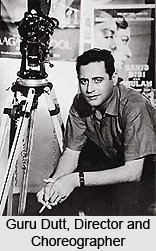 The basic training given to Guru Dutt in the field of dancing is credited to the internationally famous danseuse Uday Shankar. Guru Dutt lived along with his family in Calcutta, while he completed his basic education. Financial constraints did not allow him to study above the degree of matriculation, which he completed in 1941. Guru Dutt was creative from a young age and had keen interested in photography. His natural inclination for dancing and emoting people attracted majority of his near ones. His love for music especially Hindi and Bengali folk film music from a tender age was clearly noticeable.
The basic training given to Guru Dutt in the field of dancing is credited to the internationally famous danseuse Uday Shankar. Guru Dutt lived along with his family in Calcutta, while he completed his basic education. Financial constraints did not allow him to study above the degree of matriculation, which he completed in 1941. Guru Dutt was creative from a young age and had keen interested in photography. His natural inclination for dancing and emoting people attracted majority of his near ones. His love for music especially Hindi and Bengali folk film music from a tender age was clearly noticeable.
Guru Dutt joined the `Uday Shankar India Culture centre` in Almora on a five-year scholarship, paying only Rs. 75, which valued quite high in those days. His uncle B. B Benegal helped his throughout his career, specially loved his dancing skills, and was a pillar of support to the family financially. Moreover, his uncle was an artistic influence to the Padukone kids. In the meanwhile, Guru Dutt took up a job as a telephone operator in a mill for a short spell of time and carried on with his dance lessons simultaneously. During his leisure hours and free days, Guru Dutt began to organize his own dance compositions.
After Guru Dutt`s dance training at Almora, he got a break in films as a dance director on a three-year contract at Prabhat films, Pune. Along with choreography Guru Dutt assisted directors and even acted in small character roles for some films at Prabhat Studios. In 1944, he acted in a small role as Sree Krishna in `Chand`; in 1945 he acted and also assisted director Vishram Bedekar in `Lakhrani`. In 1946 he worked as an assistant director and choreographer in the film ` Hum Ek Hain`. Prabhat Film Company hired Guru Dutt as a choreographer after working with Director Anadinath Banerjee for the film `Mohan` in 1947 as the assistant producer by the Famous Pictures and Studios at Mumbai. At Prabhat Film Company, he met Dev Anand and Rehman, both of them later became stars. These early friendships helped Guru Dutt to enter the film world without much effort.
Guru Dutt as a Producer
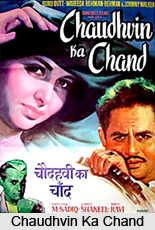 Guru Dutt rose to a position of an undisputable star after his 1960 production Chaudhvin Ka Chand with Waheeda Rehman, which proved to be a massive hit. This film also saved his studio from ruining. Guru Dutt also produced the legendary film in 1962 - Sahib Bibi Aur Ghulam. He also acted in the lead role alongside Waheeda Rehman and Meena Kumari. This earned him his only Filmfare nomination as Best Actor. His protege Abrar Alvi publicly directed him. Sahib Bibi Aur Ghulam is still thought to be his one of most tragic and aesthetic films. In 1964 Guru Dutt acted in his last film Sanjh Aur Savera opposite Meena Kumari.
Guru Dutt rose to a position of an undisputable star after his 1960 production Chaudhvin Ka Chand with Waheeda Rehman, which proved to be a massive hit. This film also saved his studio from ruining. Guru Dutt also produced the legendary film in 1962 - Sahib Bibi Aur Ghulam. He also acted in the lead role alongside Waheeda Rehman and Meena Kumari. This earned him his only Filmfare nomination as Best Actor. His protege Abrar Alvi publicly directed him. Sahib Bibi Aur Ghulam is still thought to be his one of most tragic and aesthetic films. In 1964 Guru Dutt acted in his last film Sanjh Aur Savera opposite Meena Kumari.
After producing `Chaudhvin Ka Chand` (1960) based on Muslim culture of Lucknow that was directed by Saddiq Sahib, he came up with his next impressive production ` Sahib Biwi Aur Ghulam` (1962). The latter film won the Presidents silver medal as well as the Film of the year award from the Bengal Film journalists Association besides going to the Berlin Film Festival and being India`s official entry for the Oscars. Guru Dutt passed away during the making of the film `Baharein Phir Aayengi` that was later completed by his brother Atmaram with Dharmendra in the lead.
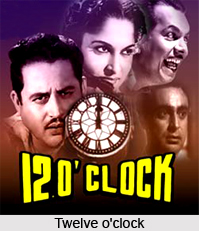 Along with his own productions, Guru Dutt also worked with outside productions like Twelve o`clock (1958), Sautela Bhai (1962), Bahurani (1963), Bharosa (1963), Suhagan (1964), Sanjh Aur Savera and many others. Guru Dutt has worked opposite almost all the famous heroines of the times. In 1952, days before `Jaal` was released Guru Dutt founded a production company in partnership with Haridasrshan Kaur, actress Gita Bali`s elder sister. Unfortunately the partnership was separated soon after, due to heavy financial loss after the production of Baaz (1953). With the film Aar Par he started his own production company and a studio extension later. This house produced many successful films in future and CID (1956) was one of them in which he introduced Waheeda Rehman and then in many movies thereafter.
Along with his own productions, Guru Dutt also worked with outside productions like Twelve o`clock (1958), Sautela Bhai (1962), Bahurani (1963), Bharosa (1963), Suhagan (1964), Sanjh Aur Savera and many others. Guru Dutt has worked opposite almost all the famous heroines of the times. In 1952, days before `Jaal` was released Guru Dutt founded a production company in partnership with Haridasrshan Kaur, actress Gita Bali`s elder sister. Unfortunately the partnership was separated soon after, due to heavy financial loss after the production of Baaz (1953). With the film Aar Par he started his own production company and a studio extension later. This house produced many successful films in future and CID (1956) was one of them in which he introduced Waheeda Rehman and then in many movies thereafter.
Even though Guru Dutt experienced his share of success and failure in his work, his personal life was not in orderly manner and by early 1964; he was separated from his wife, Geeta Dutt and was living alone. He did not enter into any more production ventures, rather started drowning in alcohol. On October 10, 1964 Hindi film world suffered a great loss, when Guru Dutt at the young age of 39 died of an overdose of sleeping pills. The prevailing magic of his films even now decades after his tragic end, bear witness to the skill of this genius who lived much ahead of his times.
Some of Guru Dutta`s productions are as follows -
| C.I.D (1956) | Pyaasa | Mr. And Mrs. 55 | Chaudhvin Ka Chand |
| Cast: Dev Anand, Johny Walker, Kumkum, Shashikala, Singh K N, Waheeda Rehman | Cast: Guru Dutt, Johny Walker, Mala Sinha, Rehman, Waheeda Rehman | Cast: Agha, Cuckoo, Guru Dutt, Johny Walker, Kumkum, Lalita Pawar, Madhubala, Yasmin | Cast: Guru Dutt, Waheeda Rehman, Minu, Mumtaz, Johny Walker, Rehman, |
| Music Director: O P Nayyar | Music Director: S D Burman | Music Director: O P Nayyar | Music Director: Ravi |
| Director: Raj Khosla | Director: Guru Dutt | Director: Guru Dutt | Director: M.sadiq |
| Producer: Guru Dutt Films | Producer: Guru Dutt Films | Producer: Guru Dutt Films | Producer: Guru Dutt Films |
| Year: 1956 | Year: 1957/Lyrics: Sahir Ludhianvi | Year: 1955/Lyrics: Majrooh Sultanpuri | Year: 1960 |
Cult Films of Guru Dutt
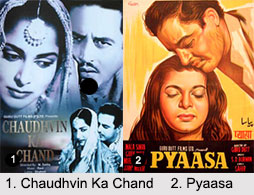 The cult films of Guru Dutt uncover the depths of the filmmaker`s personality and crystallize his aspirations, his phobias and his conceptions of cinema and life, revealing an irrepressible wish for death. The despair and pessimism of P.C. Barua"s "Devdas" continues in his films.
The cult films of Guru Dutt uncover the depths of the filmmaker`s personality and crystallize his aspirations, his phobias and his conceptions of cinema and life, revealing an irrepressible wish for death. The despair and pessimism of P.C. Barua"s "Devdas" continues in his films.
"Pyaasa" (1957), in which he himself played the role with Mala Sinha, a popular and talented star hailing from Nepal and born in Kolkata, was a brilliant success which brought him into the limelight. This film also brought to limelight one of the country"s finest actresses Waheeda Rehman. He introduced her in an earlier film "C.I.D." (1956). "Pyaasa" was an enormous success among those Indian cinema lovers who were the most ardent fans of Bollywood musical films. The romantic melodrama has as its central theme the unquenchable thirst of an artiste, a lover wanting to be loved and recognised in an insensitive world ruled by money and power struggles. The music of S. D. Burman and the splendid Urdu ghazals composed by Sahir Ludhianvi are perfectly integrated by Guru Dutt with the plot and action in his film.
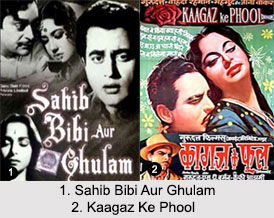 His next film, "Kaagaz Ke Phool" (1959) presented a well-developed reflection on the place of an artist in the society. It was a further step towards pessimism, even nihilism and more autobiographical and premonitory than ever. This fascinating hymn to cinema is also a caution against its corrupting and artificial power. It tells the story of Suresh, once a filmmaker, who had become a dropout after failures and returns one evening into the deserted studio which was a witness to his fame. The lead roles were played by Guru Dutt and Waheeda Rehman. Rarely has an autobiography by a filmmaker been portrayed on the screen in a manner so intense. The film was a commercial failure for the public seemed to be put off by the character of the director and probably even more so by too sombre and lonely anti-hero. It was probably for the first time in the history of Indian cinema or at least Bollywood that the concept of anti-hero and tragedy were introduced in the mainstream.
His next film, "Kaagaz Ke Phool" (1959) presented a well-developed reflection on the place of an artist in the society. It was a further step towards pessimism, even nihilism and more autobiographical and premonitory than ever. This fascinating hymn to cinema is also a caution against its corrupting and artificial power. It tells the story of Suresh, once a filmmaker, who had become a dropout after failures and returns one evening into the deserted studio which was a witness to his fame. The lead roles were played by Guru Dutt and Waheeda Rehman. Rarely has an autobiography by a filmmaker been portrayed on the screen in a manner so intense. The film was a commercial failure for the public seemed to be put off by the character of the director and probably even more so by too sombre and lonely anti-hero. It was probably for the first time in the history of Indian cinema or at least Bollywood that the concept of anti-hero and tragedy were introduced in the mainstream.
In 1960, he produced "Chaudhvin Ka Chand" in which he played the lead role alongside Waheeda Rehman and Johnny Walker. By the artifice of a love triangle intrigue, it is a film devoted to the decadence of the traditional art of living at the time of the Muslim Nawabs of Lucknow. The city was one of the shining cultural centres of the time and it was famous for its poetry, its musicians and its danseuses and courtesans. The film contains some beautiful songs written by Saghir Usmani with music by Shakeel Badaiyuni.
Another gem of Indian Cinema is "Sahib Bibi Aur Ghulam" (1962), produced by Guru Dutt in a way it reflects his love for the Bengali culture as the film was adapted from Bimal Mitra`s novel of the same name. The task of direction was entrusted to his colleague, scriptwriter and friend, Abrar Alvi. As is usual for Guru Dutt films it once again brought together some of the biggest names of the Hindi film industry, Meena Kumari, Rehman and Waheeda Rehman alongside Dutt. Three films, barring "Chaudhavin Ka Chand", were three sinking projection of a suffering anti-hero, each time portrayed by Guru Dutt. In 1963 and 1964, he played the leading role in films of five other colleagues. After four attempts at suicide, Guru Dutt breathed his last in 1964, aged of 39.
Guru Dutt Films Pvt. Ltd
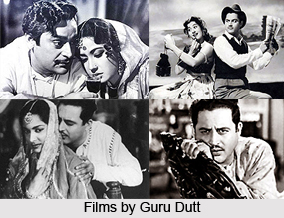 Guru Dutt Movies Pvt. Ltd. is also known as GDMPL in short. This organization is an Indian movie production company, started by legendary actor-director, Guru Dutt. His son `Arun Dutt` runs guru Dutt Movies Pvt. Ltd. is presently. Arun Dutt wrote and directed film Khule Aam (1992).
Guru Dutt Movies Pvt. Ltd. is also known as GDMPL in short. This organization is an Indian movie production company, started by legendary actor-director, Guru Dutt. His son `Arun Dutt` runs guru Dutt Movies Pvt. Ltd. is presently. Arun Dutt wrote and directed film Khule Aam (1992).
Guru Dutt Movies Pvt. Ltd. is an Indian movie production company of equal fame as the celebrated actor and director Guru Dutt. GDMPL offered some of its best works during the 50s and 60s. The era of Guru Dutt films were referred to as the "Golden age of Indian Cinema". The Guru Dutt team gave some of the most memorable movies, which have enjoyed being offbeat even till date.
Production and vision of the company spread eventually. In the meanwhile the founder Guru Dutt expired. His brothers and sons managed the future years of GDMPL. They released three movies, which were not much noticed. "Pyaasa" is a Guru Dutt Movies Pvt. Ltd. release and is listed by Time as among the top 100 movies of all time. Moreover, "Kaagaz Ke Phool", was released soon and it was a box-office disaster of its time, which followed a worldwide cult following till date. Whatever, may be the situation, the movie runs full house when re-released world over.
Movies produced by Guru Dutt Movies Pvt. Ltd.
| Year | Film | Year | Film |
| 1984 | Bindiya Chamkegi | 1957 | Pyaasa |
| 1969 | Chanda Aur Bijli | 1956 | C.I.D. |
| 1966 | Baharen Phir Bhi Aayengi | 1955 | Mr. & Mrs. `55 |
| 1962 | Sahib Bibi Aur Ghulam | 1954 | Aar-Paar |
| 1960 | Chaudhvin Ka Chand | 1953 | Baaz |
| 1959 | Kaagaz Ke Phool |
